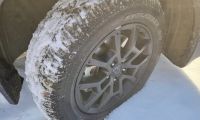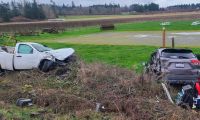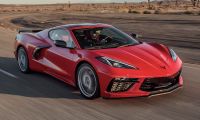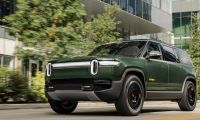Tesla announced this week that a key component in its “self-driving” technology platform is about to move from radar sensors to optical sensors. Tesla calls its technology "Pure Vision." This is not exactly a shift to some higher level of technical know-how. Subaru has been using optical sensors to provide driver-assist features for much of the past decade. Armchair engineers and Tesla fans are now debating the shift in technology from one type of transducer to another. All I want to know is will the new sensor array stop Tesla’s cars from crashing into police cars, firetrucks, semi-trailers, highway barriers, and other static objects.

What Do Driver Assist Sensors Do?
Stopping cars from crashing is one of the objectives behind the move to driver-assist technology. Tesla calls its two packages Autopilot and Full Self-Driving. Those names were chosen specifically to give you the impression that these vehicles can drive themselves. This begs the question; If they can drive themselves, even in certain circumstances, they must be able to see and avoid parked firetrucks with flashing lights, reflective tape and flares deployed ahead of the vehicle, right? Nope. Or they must at least be able to stop instead of crashing straight into the side of the largest vehicles on the road, tractor-trailers, right? Nope.
Does Tesla’s New Technology Prevent Crashes?
For five years, Tesla vehicles equipped with the old technology have been regularly driving themselves straight into huge things anyone with eyes could see. Maybe this shift away from radar and toward optics is Tesla’s attempt to stop these seemingly preventable crashes from happening. Or maybe not. If not, then will Tesla vehicles continue to drive at high speed into emergency vehicles assisting motorists during highway emergencies? Although Tesla has not said if this technology shift will prevent the high-profile seemingly preventable crashes showering it with bad press, Teslarati reports that Elon Musk did say it would stop the phantom-braking reported by many Tesla drivers.
Are Tesla Crashes Common?
If you are not up to speed on the types of crashes we are referring to, simply type “Tesla hits firetruck” into your browser. In under one second, your computer will provide you with over 7 million options to read more about this topic. The first story that comes up when I do the search is one from Car and Driver titled, “NHTSA Investigating Indiana Crash Where Tesla Model 3 Hit Fire Truck.”
Alternatively, you can type, “Tesla hits semi.” This search will show you about three million results. The top story on my browser is one from the Tesla-advocacy publication Inside EVs titled “UPDATE: Tesla Crashes Into Another Semi: Federal Investigation Underway.”
Whether or not an occupant (the word "driver" is so old school) enables a system inside of her Tesla or not is irrelevant. Driver-assist safety systems don’t need to be “turned on” to work. All modern cars have advanced automatic emergency braking designed specifically to stop you from accidentally driving straight into firetrucks and semi-tractors. Yet, Tesla’s system seems to ignore these hazards on a regular basis and allow the vehicle to drive into them. How does that square with a company that advertises a product called “Full Self Driving?” Perhaps it doesn’t, and perhaps the new sensors are an attempt to stop the seemingly preventable crashes.
How Can I Learn More About Unusual Tesla Crashes?
The below list of prior stories may help provide background on the subject of Tesla vehicle crashes that were not prevented by the radar-based technology that Tesla has employed up to now.
Tell us in the comments below if you think Tesla’s technology shift will help stop future crashes of its vehicles into large, easy-to-see objects.
Image note: The top of page image is an old picture of Subaru's now mature Eyesight camera-based driver-assist system.
Past Stories Related To This Topic:
May 2021: Five Years After First Tesla Tragedy Seemingly Preventable Crashes Still Occur
April 2021: Video of Tesla Model Y On Autopilot With No Driver Demonstrates Need For Government Intervention
March 2021: Another Tesla Hits Another Semi From the Side - This Time It Looks Like a Model Y
August 2020: Tesla Operated By Full Self Crashing System Hits Two Parked First Responder Vehicles - Again
July 2020 - Police: Tesla On Autopilot Hits Not One, But TWO Parked First Responder Vehicles
January 2020: Second Crash In One Month Of A Tesla Into A Parked Firetruck Results In Fatality
December 2019: Tesla Model 3 On Autopilot Hits Yet Another Police Vehicle - Why Won't They Stop?
August 2018: Third Tesla Crashes Into Back of Firetruck - That's Four Crashes Into Emergency Vehicles This Year
May 2018: Another Tesla On Autopilot Hits Another Emergency Vehicle - You Can't Make This Stuff Up
January 2018: Tesla Police Blotter News - Tesla Driver Hits Parked Firetruck - Blames Autopilot
July 2016: Understanding the fatal Tesla accident on Autopilot and the NHTSA probe
John Goreham is a long-time New England Motor Press Association member and recovering engineer. John's interest in EVs goes back to 1990 when he designed the thermal control system for an EV battery as part of an academic team. After earning his mechanical engineering degree, John completed a marketing program at Northeastern University and worked with automotive component manufacturers, in the semiconductor industry, and in biotech. In addition to Torque News, John's work has appeared in print in dozens of American newspapers and he provides reviews to many vehicle shopping sites. You can follow John on TikTok @ToknCars, on Twitter, and view his credentials at Linkedin












Comments
You can see my comments in
Permalink
You can see my comments in another article here at TorqueNews which wonders why Tesla is making this transition to optical cameras only for their automated driving systems now. Even though I am not convinced that Tesla's move to only optical cameras is a wise one, I don't think that this analysis here is even remotely fair to Tesla. Sure you are going to get 3 million hits on a search about a Tesla hitting a fixed vehicle, but it is still only one or two accidents, with something far less than a dozen similar Autopilot-error collisions over the last decade. All but the last couple incidents used fundamentally different Autopilot technologies in their safety systems 6 years ago. So other than being in Tesla vehicles, they do not have any real connection to today's technologies used, let alone Tesla's next generation of Autopilot software and hardware. Oh, and a quick search shows 59 million answers to people driving into emergency vehicles. And the numbers showed that there were about 1,500 collisions every year in the U.S. Is it critical that ONE of them was a Tesla running Autopilot?
Stepping back from the
Permalink
In reply to You can see my comments in by DeanMcManis (not verified)
Stepping back from the details, why does Autopilot need "to be running" to prevent a modern Tesla car from smashing into the largest and most visible things found on a roadway? Why doesn't the vehicle stop itself? Or in the case of the vehicles struck in breakdown lanes, maintain their lane? After all, Tesla vehicles will need to do so when the full self-driving system is "on", right? Driver-assist safety systems do not need to be enabled in any modern vehicle to function. Protection is the default setting. Shouldn't Tesla vehicles be able to stop themselves from hitting parked firetrucks? Or at the very least be auto-braking at the vehicle's full stopping power to reduce the severity of the impact just prior to the crash? I am not really interested Autopilot or FSD. I just want to know why Tesla's can crash into things that are huge, have maximum visibility, and are not moving, or are moving quite slowly. Perhaps the different technology will help. I hope it does.